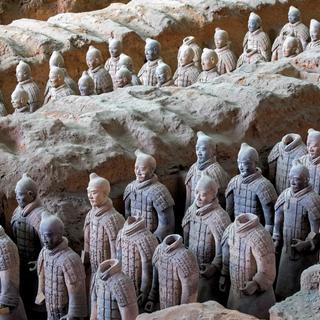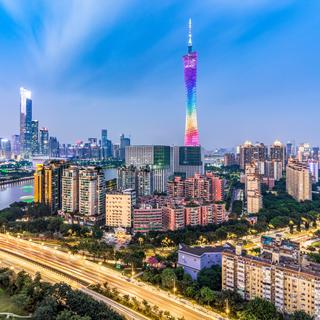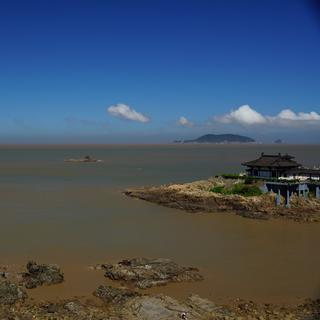Qiqihar weather and climate in 2025
Day
26 °C
Night
18 °C
Sea
0 °C
Precipitation
94 mm
in month
Rainy days
9 days
in month
Daylight
14 hours
average
Sunshine
8 hours
average
Humidity
75 %
Weather charts for Qiqihar
Find more destinations like this
Closest destinations for Qiqihar
Closest cities for Qiqihar
Weather overview for Qiqihar
Weather overview
Qiqihar (China) in general has a cold continental climate. Temperatures during the day are in the range from -12 °C (10 °F) in January to 27 °C (81 °F) in July. The least rainy month in Qiqihar is January with its 1 day of rain, the rainiest month is July, when it rains 12 days. The highest night temperatures could be experienced in July with 20 °C (67 °F), the lowest in January with -22 °C (-8 °F).
January weather
The day temperature reaches its minimum, with its value being -12 °C (10 °F) in Qiqihar, and the night temperature is on its minimum as well, with its value of -22 °C (-8 °F). The dry season is taking place. The minimum of the number of rainy days is observable, its value is 1 day. The wind speed is on its minimum, with its value of 3. The beginning of the rise of the number of sun hours (without clouds) could be noticed, the value of this measure is 6 hours.
February weather
The minimum of the rainfall amount is observable, its value is 2 mm (0.09 in) in Qiqihar. The dry season is taking place. The day temperature starts to rise, and the night temperature starts to rise too, its value is -18 °C (0 °F). The rise of the number of sun hours (without clouds) can be observed, with its value being 7 hours.
March weather
The rise of the day temperature can be observed, the value of this measure is 3 °C (37 °F) in Qiqihar, and the rise of the night temperature can be observed as well, with its value being -9 °C (16 °F). There is pending dry season this month. The number of rainy days rise's start could be observed. The rise of the number of sun hours (without clouds) can be observed.
April weather
The tourist season is about to start in April in Qiqihar. The day temperature continues to rise, and the night temperature rises similarly to the previous month as well, the value of this measure is 2 °C (35 °F). The rise of the number of rainy days can be observed, the value of this measure is 3 days, while the rainfall amount starts to rise, with its value of 20 mm (0.78 in). The wind speed is on its maximum in April.
May weather
The tourist season continues in Qiqihar. The rise of the number of rainy days can be observed, with its value being 6 days, and the rise of the rainfall amount can be observed too, the value of this measure is 33 mm (1.31 in). The night temperature continues to rise, the value of this measure is 10 °C (49 °F), and the day temperature continues to rise as well, its value is 21 °C (70 °F). The number of sun hours (without clouds) starts to rise, with its value of 9 hours.
June weather
The rise of the day temperature can be observed, its value is 26 °C (79 °F) in Qiqihar, and the rise of the night temperature can be observed as well, with its value being 17 °C (62 °F). The number of rainy days continues to rise, the value of this measure is 10 days. The tourist season is taking place. The number of sun hours (without clouds) is on its maximum, the value of this measure is 9 hours. The day length reaches its maximum, the value of this measure is 16 hours.
July weather
The maximum of the day temperature is observable, with its value being 27 °C (81 °F) in Qiqihar, and the night temperature is on its maximum as well, its value is 20 °C (67 °F). There is pending tourist season in July. The maximum of the rainfall amount is observable, with its value being 139 mm (5.48 in), and the number of rainy days reaches its maximum too, with its value being 12 days. The number of sun hours (without clouds) starts to descent, with its value being 8 hours.
August weather
The tourist season is close to its peak in Qiqihar. The beginning of the descent of the number of rainy days could be noticed, with its value being 9 days, and the rainfall amount descent's start could be observed too, with its value being 94 mm (3.70 in). The beginning of the descent of the day temperature could be noticed, the value of this measure is 26 °C (79 °F), and the beginning of the descent of the night temperature could be noticed as well, the value of this measure is 18 °C (64 °F). The maximum of the humidity is observable in August.
September weather
The day temperature descents similarly to the previous month in Qiqihar, and the night temperature continues to descent as well. The tourist season is taking place. The number of rainy days descents similarly to the previous month, the value of this measure is 7 days, and the rainfall amount descents similarly to the previous month too, with its value of 43 mm (1.68 in). The number of sun hours (without clouds) starts to descent, with its value being 8 hours.
October weather
The descent of the day temperature can be observed, its value is 11 °C (51 °F) in Qiqihar, and the night temperature continues to descent as well, with its value of 1 °C (33 °F). The number of rainy days descents similarly to the previous month, with its value of 3 days, and the rainfall amount continues to descent too, the value of this measure is 19 mm (0.75 in). The dry season is at its beginning. The number of sun hours (without clouds) continues to descent, with its value being 7 hours.
November weather
The descent of the day temperature can be observed in Qiqihar, and the night temperature descents similarly to the previous month too, its value is -11 °C (13 °F). The number of rainy days descents similarly to the previous month, the value of this measure is 2 days, and the rainfall amount continues to descent as well, with its value being 5 mm (0.20 in). The dry season is taking place. The descent of the number of sun hours (without clouds) can be observed, its value is 6 hours.
December weather
The dry season is taking place in Qiqihar. The day temperature continues to descent, its value is -10 °C (14 °F), and the night temperature continues to descent as well, its value is -19 °C (-2 °F). The number of sun hours (without clouds) reaches its minimum, its value is 5 hours. The day length reaches its minimum, its value is 8 hours.
FAQs
What level of humidity is to expect in February in Qiqihar?
In February in Qiqihar, expect humidity around 67 %.
How many sunny hours can I expect in April in Qiqihar?
There is an average length of sunshine of 8 hours per day in April in Qiqihar.
Are there good conditions to visit in Qiqihar in May?
May is a good month to visit Qiqihar. You can expect just 6 days of rain during the month, taking an umbrella is not necessary. There are some people, who may feel a slight chill at 21 °C (70 °F), but others will feel perfectly fine. The temperature of 10 °C (49 °F) at night may make it better to dine inside or to put on more clothes for a dinner outside.
Is there a wet season in June in Qiqihar?
No, there is no wet season in June in Qiqihar - you can expect 10 days of rain during the month.
What temperature can I expect during the day in July in Qiqihar?
The average daily temperature in July in Qiqihar is 27 °C (81 °F). The ideal temperature for enjoying sunbathing by the water and a good temperature for other activities. For some people, it will be too hot in the direct sunlight and the stay may not be so pleasant. Don't forget to pack flip-flops, sunscreen, and a hand fan if necessary - it may come in handy.
Is it hot in August in Qiqihar?
In Qiqihar in August, you will enjoy nice warm weather, but it will also be pleasant and you probably won't feel hot.
How many days of precipitation on average can I expect in September in Qiqihar?
There are 7 days, which are rainy in Qiqihar in September, that is, days with precipitation more than 2 mm (0.08 in). Converted to days of the week, this means that it will occur on an average of 1.5 days of the week, or in general - 22 % days.
Is October part of the dry season in Qiqihar?
Yes, there is a dry season in October in Qiqihar with just 3 days during the month being rainy.
What is the night temperature in Qiqihar in November?
The average night temperature in Qiqihar in November is -11 °C (13 °F). The nights will be cool, layers of clothes will be needed for evening and morning walks, the hotel should be equipped with heating.
How windy is Qiqihar in December?
An average wind scale that can be expected in December in Qiqihar is 3. It is rather a milder or unnoticeable wind, therefore it will not bother you during your holiday.
We make the most from 40 years of historical weather data to predict the best weather conditions.
Deciding on where to go for a holiday is hard sometimes. Get inspired by the most popular destinations.
We aggregate data from combining multiple weather sources to ensure accuracy of the highest order.







